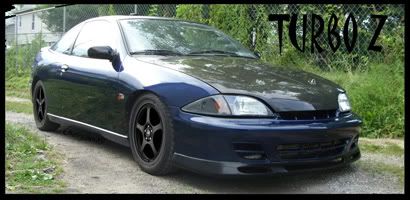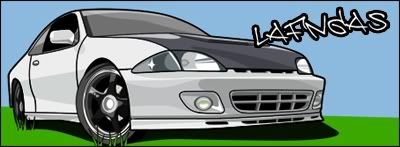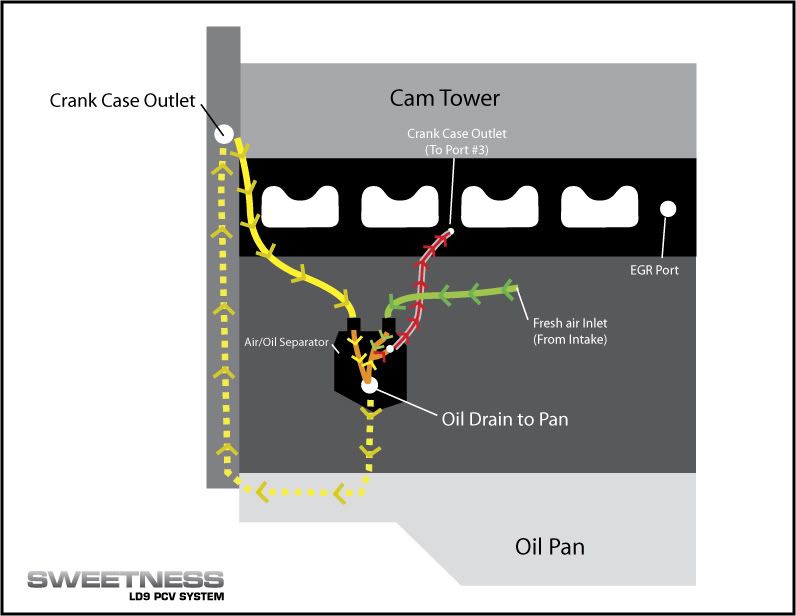A+
But now you have me alittle worried about S/Cing my eco.
Tinkles
v. intr.
1. To make light metallic sounds, as those of a small bell.
2. Informal To urinate.
v. tr.
1. To cause to tinkle.
2. To signal or call by tinkling.
n.
1. A light, clear metallic sound or a sound suggestive of it.
2. An act or instance of tinkling.
Eco guys can just run a LSJ intake manifold gasket and that will seal up that port between 2-3.
I'm just going to run a breather filter off the PCV nipple and probably block that hole off with the LSJ gasket which the kit tells you to trim to make it match.
I haven't heard any eco guys running into problems with this issue you have. So i dunno, kool idea if it helps you but I don't think I will have any issues.

Very nice writeup sweetness. I had a good idea of what needed to be done for the best setup but you just helped 100% with part numbers and all. I have a pic of Fetters tapped pcv plate saved somewhere lol. For the smaller catch coming off the tapped hose bard a fuel filter will work fine correct?

The ecotec supercharged setup uses the LSJ gasket as cody mentions... this blocks off the port. If you are gonna run an ecotec with a stock N/A manifold and boost you must tap the manifold flange so that you can put vaccum to that port.
If you run the GMSC M62 for the eco it blocks the port off - the supercharger has a vaccum port cast into the lower manifold which goes to the bypass area.
On the LD9 GMSC the manifold flange is already tapped, you run a vaccum line from the nipple to the bypass area on the charger.
No worries if you're going with GMSC stock boost, this is for guys who want to turbocharge with the stock intake manifold or the H.O manifold for the LD9 boys.
IceMike - I am using an air compressor line filter... I'll see if I can find a link to one. I heard about it online and went to home depot to check it out in person, really nice little piece and apparently it works well.
I simply wanted this system so I had venting under boost and off boost.
-Chris-
-Sweetness-
-Turbocharged-
Slowly but surely may some day win this race...
I have a s/c eco and the only place it leaks oil is alittle bit out of the PCV breather that I put on there....any better suggestions?
2005 LS Auto (Blue)
-M62 Kit with 3.1"
-ZZP S3 H/E setup
-Pacesetter armor coated header
-Magnaflow 22" resonator (p/n 10436)
-Vibrant CatBack
-TTR Upper and Lower motor mounts
hey chris, just wanted to bug ya but your checkvalve for the turbo intake side should be opening to the manifold thus allowing air to go through it and creating the vacuum is it not?


so for me to fix this i can just get the lsj intake manifold gasket? correct? and that goes between the black plastic intake manifold and the motor correct?

I just made a small metal plate, and sandwiched it between the intake manifold and the pcv gasket. Only thing i noticed is a bit more oil in my oil catchcan, nothing to write home about though.
 Currently #4 in Ecotec Forced Induction horsepower ratings. 505.8 WHP 414WTQ!!!
Currently 3rd quickest Ecotec on the .org - 10.949 @ 131.50 MPH!!!
Currently #4 in Ecotec Forced Induction horsepower ratings. 505.8 WHP 414WTQ!!!
Currently 3rd quickest Ecotec on the .org - 10.949 @ 131.50 MPH!!!
i'd say STICKY but it'd never get done.

Needing 2.3 oil pump stuff? PM me...
great write up.. Keep in mind, you can't really go to big for crankcase relief.
Read the build book, they suggest a -12 fitting welded to the eco valve cover, leading to a catch can. A lot of the fast/high hp cobalts and redlines run a breather oil cap available online.
personally I just had a -10 fitting welded to my valve cover to a custom catch can and atmospheric..
Honda-tech has GREAT write ups about crankcase ventilation, pro's/con's, how to's, why's and anything else you can think of



i almost thought about adding 2 -10 bungs to the timing chain cover and run that to a catch can

R.I.P. Brian Klocke, you will never be forgotten
Looks good Chris....will you post some pics of the setup once you have it installed?
Boosted2point4 wrote:i almost thought about adding 2 -10 bungs to the timing chain cover and run that to a catch can
I thought about doing the same the other day. Maybe next year...

anyone have a pic of doing it on an eco? im confused on this i guess..


Ok i talked to Chris on this and the problem with finding the check valve is they have to be the McMaster Carr and they are only available throught them. problem is, they are not accepting new accounts at this time. laffngas tried to order them and that is what they told him too. i tried and got the same response. GOOD NEWS IS.... my dad already has an account with them and we are willing to order them for the people who want and need them.
and a note, the correct part number for the female to female i s 7775K54, NOT 7775K64. just to clarify.
i need to know how many people will need these check valves so i can compile a list. i will not make anything off these. just going to get you your parts. they will retail for $22.33 and thats what you will buy them for plus shipping. and it will be CHEAP to ship.
this is purely for interest. no minimum but i dont want to keep doing single orders if i can help it.
Name, quantity, email, payment method
--------------------------
1. Vincent Morris, 2, Vink70_99@yahoo.com, paypal

I am still confused on this. If anybody can make up a diagram of a s/c eco, that would make a world of difference. I do, however, understand most of the concepts
Vincent Morris wrote:Ok i talked to Chris on this and the problem with finding the check valve is they have to be the McMaster Carr and they are only available throught them. problem is, they are not accepting new accounts at this time. laffngas tried to order them and that is what they told him too. i tried and got the same response. GOOD NEWS IS.... my dad already has an account with them and we are willing to order them for the people who want and need them.
and a note, the correct part number for the female to female i s 7775K54, NOT 7775K64. just to clarify.
i need to know how many people will need these check valves so i can compile a list. i will not make anything off these. just going to get you your parts. they will retail for $22.33 and thats what you will buy them for plus shipping. and it will be CHEAP to ship.
this is purely for interest. no minimum but i dont want to keep doing single orders if i can help it.
Name, quantity, email, payment method
--------------------------
1. Vincent Morris, 2, Vink70_99@yahoo.com, paypal
The other option which may not be better but a lot cheaper is to get the valves from the yard. A couple months ago I grabbed the entire PCV system off a boosted SAAB including all the check valves I need for practically nothing. Plan on putting it together before season stars this year so Ill post up some pics.
___________________________________________________________________


Hahn Stage II - Mitsu TD06-20g |3" Turbo-back Exhaust | 61mm Bored TB |
HP Tuners | Innovate WB02 | Spec Stage 3 | Team Green LSD | TurboTech Upper | Full Addco Sways | Sportlines & Yellows |
Would you want to put them closer to the timing chain cover? I think the cam towers and timing housing are connected right? I may just weld the bungs on this year while the motor is out...

good read. But does this concern everyone doing a boosted eco or ones who are just keeping the stock manifold.? just to clear it up
ECOtec DOHC

Very nice Chris, I like this Idea. I think im going to just let my pcv hole in the head breath on its own for right now(since that solved my oil loss problems) and see how it does on dyno runs here soon. But this is definately something I want to do in the future.
~2014 New Z under the knife, same heart different body~
______________________
WHITECAVY no more
2012 numbers - 4SPD AUTOMATIC!!
328 HP
306 TQ
Paul - this concerns LD9's and Ecos that boost with the stock intake manifold or an H.O manifold on an LD9. As stated, STOCK BOOST (i.e the M62 GMSC on the Ecotec and the M45 GMSC on the LD9) are FINE the way they are setup, they just need a catch can on the PCV inlet. (The green part of my diagram)
David - the PCV system is supposed to be under vaccum.... crank case air should be drawn out while clean air is drawn in.
-Chris-
-Sweetness-
-Turbocharged-
Slowly but surely may some day win this race...
What catch can is everoyne using? Im thinking of picking up a bwoody one and their not too far from me so maybe I could pick it up and check them out


vince you know im in just let me know when to send ya the money





















